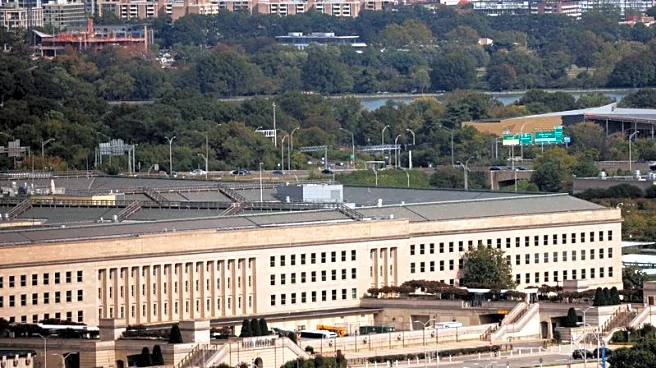What's Happening?
Tropical Storm Lorenzo, which formed in the central tropical Atlantic, is expected to take an unusual path, avoiding landfall in the United States. The storm, with maximum sustained winds of 45 mph, is moving
northwestward and is predicted to perform an elongated clockwise loop in the Atlantic Ocean. This trajectory is influenced by a large area of high pressure, keeping the storm over open waters. The National Hurricane Center forecasts that Lorenzo will gradually weaken over the coming days, posing no threat to land. This development is part of the 2025 Atlantic hurricane season, which has seen 12 named storms, including four hurricanes.
Why It's Important?
The unusual path of Tropical Storm Lorenzo highlights the complexities of weather patterns and their impact on forecasting. While the storm does not pose a direct threat to the U.S., its behavior is significant for meteorologists and climate scientists studying storm patterns and their implications. The emergence of a La Niña weather pattern for the second consecutive year could influence seasonal weather, affecting storm formation and intensity. Understanding these patterns is crucial for improving predictive models and preparing for future weather events, which can have economic and safety implications for coastal communities.
What's Next?
Meteorologists will continue to monitor Tropical Storm Lorenzo's path and behavior, providing updates on its progression. The focus will be on analyzing the storm's interaction with atmospheric conditions and high-pressure systems. This analysis could contribute to refining predictive models for future storms. Additionally, the ongoing Atlantic hurricane season will be closely watched for further developments, with attention on potential impacts of the La Niña pattern on storm activity.
Beyond the Headlines
The storm's trajectory offers insights into the broader implications of climate patterns and their effects on weather systems. It underscores the importance of international collaboration in meteorological research and the need for advanced technology in tracking and predicting storm paths. The situation also highlights the resilience of infrastructure and emergency preparedness in regions prone to tropical storms.














